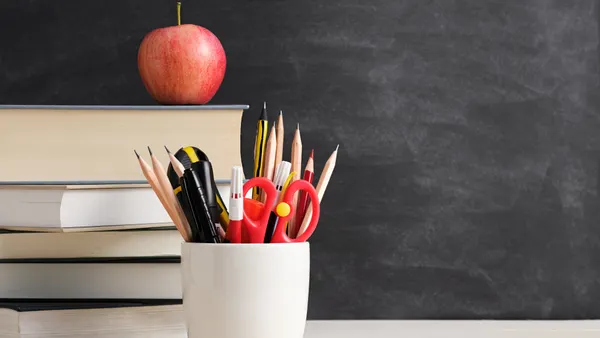Dive Brief:
- Helping girls build confidence in their ability to succeed in STEM courses may be as important as having the ability to do so. Fortunately, experts say there are several ways to seed this confidence in girls and young women — even at the earliest grade levels.
- Luckily, young children are naturally curious, said Suzanne Thurston, deputy director of the American Association for the Advancement of Science. Encouraging them to examine and ask questions about what they see in the natural world can open pathways and interest in STEM subjects.
- Additionally, said Thurston, all children need to see themselves represented in future STEM careers to imagine they can reach those roles one day, too. “One of the most impactful ways to build girls' confidence is through mentorship programs and seeing successful women as role models,” said Thurston.
Dive Insight:
Confidence is key, but to Women in STEM (WiSTEM), a nonprofit that works globally to expand access to STEM fields, so too are soft skills such as communication, teamwork and problem-solving. These can help girls find STEM mentors to help steer and support them on their path. WiSTEM helps young women find mentors in high school through its Mentorship Program and encourages them to become mentors for their peers and even younger pupils.
“When girls are empowered to become mentors for others, this encourages them to engage more deeply in the coursework and strengthens their confidence in the subject,” said Carolyn He, WiSTEM’s president. “Young girls who receive that mentorship can also expect to one day become mentors for the next generations.”
Like Thurston, He suggests students as young as 2nd and 3rd graders should begin to have some exposure to STEM and access to mentors. She points to research from the American Association of University Women that points to these grades as being when the STEM gap can appear.
He notes that only 28% of those in STEM fields identify as women, and biases that prevent women from being hired or recognized in STEM can even impact young girls.
“Inherent, if unspoken, biases propel girls to lose confidence in math and science classrooms before the undergraduate level or even as young as 3rd grade,” said He.
Community programs and organizations, such as AAAS and GSK Science in the Summer, Black Girls Do Engineer, Brown Girls Code and others can also help open the doors for young girls interested in pursuing STEM interests and building confidence to succeed. Other initiatives, such as the STEMM Opportunity Alliance, led by AAAS, are working toward creating STEM equity by 2050, something Thurston calls a “lofty but attainable goal.”
“I’m now seeing more program opportunities to address that more than I’ve seen historically when I started teaching,” said Thurston. "If I want to get my hands on resources for girls and STEM, I am going to find that now.”
Correction: A previous version of this article misidentified the target year for the American Association for the Advancement of Science’s STEM equity goal. We have updated the article.






 Dive Awards
Dive Awards



